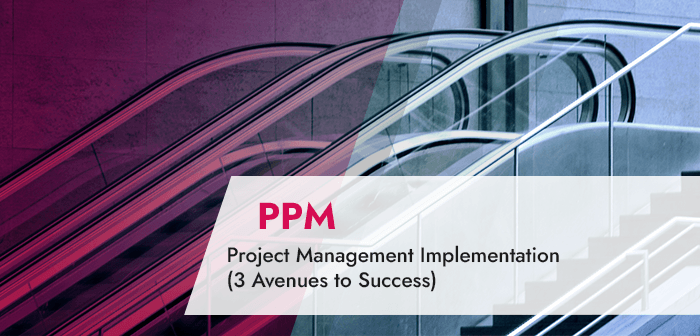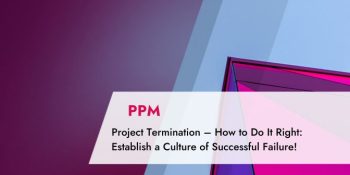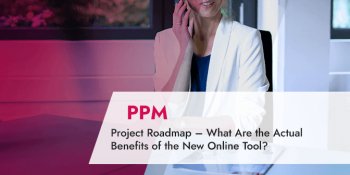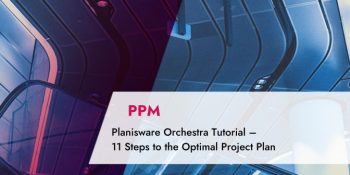Are you planning a project management implementation for a better overview and increased project success? If so, the right IT system for project, portfolio and resource management (PPM) plays a key role. This article introduces three ways or avenues of project management implementation at your company: via scheduling, via resource management or via project portfolio management. Read below which avenue would match your requirements and how to approach it.
The following chapters await you:
- The PPM Paradise – The prospect for the future
- Always begin with a central project list
- Avenue 1: Project management implementation via scheduling
- Avenue 2: Project management implementation via resource management
- Avenue 3: Project management implementation via project portfolio management
- Before you start your project management implementation
- Conclusion – Project management implementation
Use this article as a checklist. This will save you unnecessary extra rounds, which are tedious and time-consuming! You will be on the right track to implementing a “paradise” environment for project management. We call this “The PPM Paradise” and describe it in the first section.
In addition, the article will provide answers to the following questions:
- What avenue to project management is right for me?
- What aspects should I consider?
- What benefits will each of the three avenues provide?
- What could be my next steps in expanding my PPM tool?
Let us start!
What Is a PPM Tool?
A PPM tool is a project and portfolio management solution. Once a company has reached a certain size and number of projects, IT support is essential for project, portfolio and resource planning. Such a tool is used for different purposes by the different roles. A few examples:
A PPM tool helps project managers:
- plan and schedule their projects
- divide projects into tasks
- assign resources to tasks
With a PPM tool, portfolio managers:
- gain insight into the company’s overall utilization
- can judge which new projects they can take on
- identify potential for new developments
A PPM tool informs resource managers:
- which projects their resources are requested to work on
- at what time
- and for how long
Another interesting read: Why Choose the Central Microsoft PPM over a Standalone Tool?
The PPM Paradise – The Prospect for the Future
The PPM Paradise is the optimal environment for enterprise-wide program, portfolio and resource management (PPM) – adapted to your individual customer requirements. In a complex multi-project environment, it enables you to make informed decisions quickly. This project management environment gives all roles involved the good feeling that they always have full control over their project environment: this includes the PMO, top management, team leaders, project managers, project team members and controllers.
The graphic below shows a schematic overview of “The PPM Paradise” as an integrated solution for enterprise-wide multi-project management.
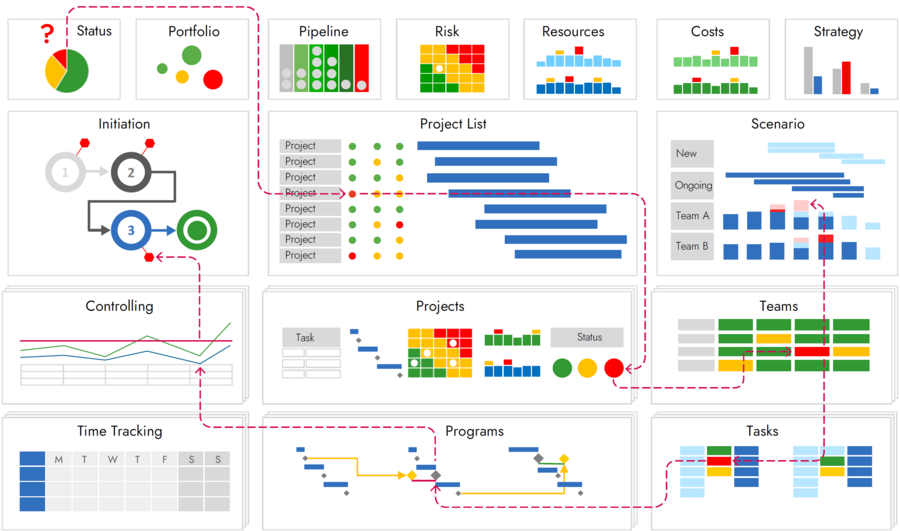
Download now: Free eBook (PDF) on “The PPM Paradise”
Here is what an optimal customizable solution for project, portfolio and resource management (PPM) should be capable of – tips and important arguments for your decision-makers. > Download eBook (PDF) “The PPM Paradise”
Always Begin with a Central Project List
In any case, the first step – even before taking one of the three possible avenues to project management implementation – is this: create a central project list in a suitable database-supported PPM tool.
With many projects, this is significantly better than an Excel list, which must be updated manually on a regular basis.
You will not succeed in multi-project management without a central overview of all projects.
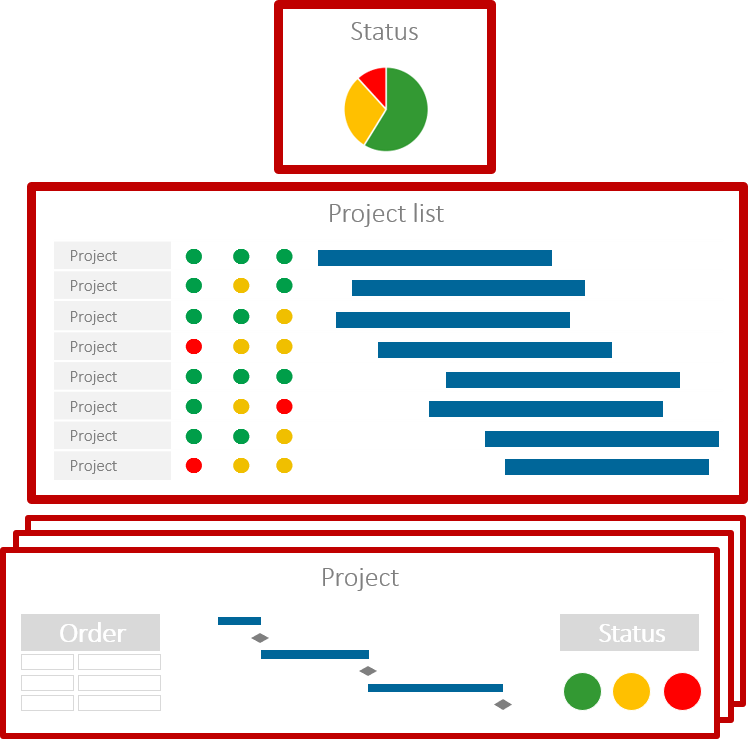
In addition to the central project list, you will need the following as a minimal solution for each project:
- Project order
- Minimal scheduling
- Project status report with traffic lights to be updated regularly
Our tip: Make sure the central project list really contains all projects. There should not be anything in the company that is not on the list. This is the only way to prevent uncontrolled projects.
Once you have met the aforementioned minimal requirements of having a central project list, you will be able to take one of the three avenues to your project management implementation. You will detail and improve it – in accordance with the right focus: scheduling, resource management or portfolio management.
Let us start with the first avenue which focuses on scheduling when implementing project management.
Avenue 1: Project Management Implementation via Scheduling
The focus on scheduling means, you know the structure; you have a schedule overview; and you have a good vantage point for controlling projects. However, you will take longer to establish project resource management because the latter requires scheduling to be completed.
This is the right avenue for you if:
- You want to control the content and schedule of individual projects
- You have to coordinate deliveries and services of external stakeholders rather than the individual deployment of your own resources.
- You are more likely to implement contract projects than company-internal development projects
- Your resources are relatively easy to obtain and do not constitute a significant bottleneck
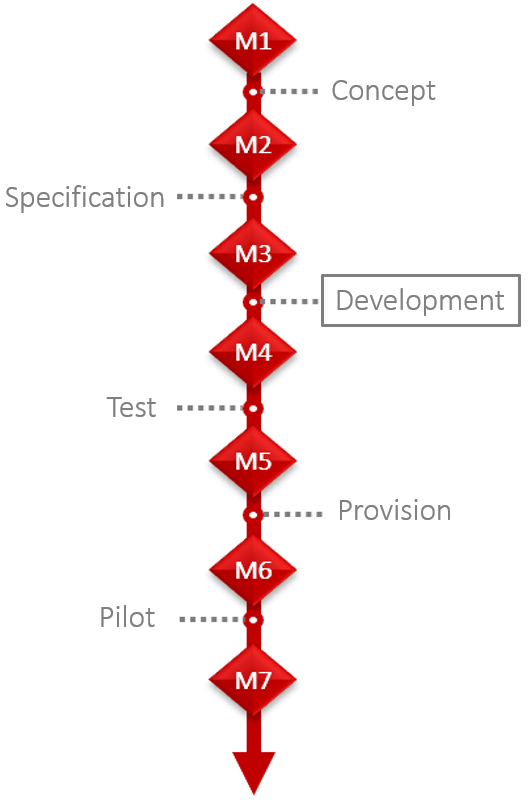
Essentials for Project Management Implementation via Scheduling
- Make sure you have an adequate project structure with phases and deliverables. This will allow you to keep track of projects – even large ones with many hundreds of tasks.
- Add task information such as places, companies involved, components etc. This will invest your schedule with meaning and allow you to filter and sort reports.
- Define reasonable milestones at handover and coordination points. These will give you better control of project timing.
- Ensure the linking of tasks is complete. And use the automatic calculation of the string of deadlines offered by suitable PM tools.
- Save your baselines to be able to view changes between the last status and the initial order.
Special Download: Advantages of MS Project Server / Project Online over MS Project Standard
Please click here to download the PDF and learn why you should prefer the server over the client version.
Your Benefits from Project Management Implementation via Scheduling
- You have a clear overview at the timeline level.
- You know the status of each task and are able to recognize problems early. For instance, this can happen via a WBS chart with traffic light indicators.
- You are aware who has to deliver what to whom. And when.
- You recognize current delays in the timeline in good time. With a milestone trend analysis (free MTA for MS Project), you can identify further trends.
- You have a perfect basis for coordination meetings because, even with large schedules, you will find it easy to focus on the relevant areas by filtering the data.
Read this to learn more about the Work Breakdown Structure (WBS).
Possible Further Steps after Beginning with Scheduling
- Adding costs to milestones and deliverables
- Putting the project team rather than the project manager in charge of recording the status of tasks
- Rough resource planning with skills on the basis of teams and external stakeholders
- Time tracking by the deployed resources themselves
- Project portfolio management
- Interfaces to ERP systems for automatic synchronization of delivery dates, material sourcing and billing information via integration middleware
If this avenue to project management implementation is not right for you, it may be the one below with a focus on resource management.
Interested in the advantages of interfaces to other systems?
Read our article about integrating PPM and JIRA.
Avenue 2: Project Management Implementation via Resource Management
When focusing on resource management, you should avoid one thing. Do not take the detour via detailed scheduling by the project managers. There is a quicker way to arrive at a functional resource overview. Let the team leaders plan all their team members’ activities and projects. Aim for rough but on the other hand entirely complete planning.
Struggling with resource planning? Our guide about project resource management might help you out!
The approach via resource management is the right avenue if:
- The availability of your resources is decisive for your projects
- You are committed to optimizing the workload of your resources rather than to meeting deadlines
- Detailed scheduling is less important for you than arriving at complete resource planning
Essentials for Project Management Implementation via Resource Management
- Record the resources of all teams with their capacities, ideally in a central resource pool.
- Reach an agreement with your employee organization on the permissions to access resource data and the granularity of planning. All of this is usually a given when team leaders do their own planning.
- Win the team leaders over for your undertaking. Convince them of the benefits of increased transparency.
- Provide the team leaders with a resource management tool exactly matched to their needs. This should not be the project managers’ tool but must be able to collaborate with the latter.
- Team leaders plan absences and all their team members’ activities – both operations and project activities. For projects, it is sufficient to plan a general commitment while detailed planning remains the project manager’s task.
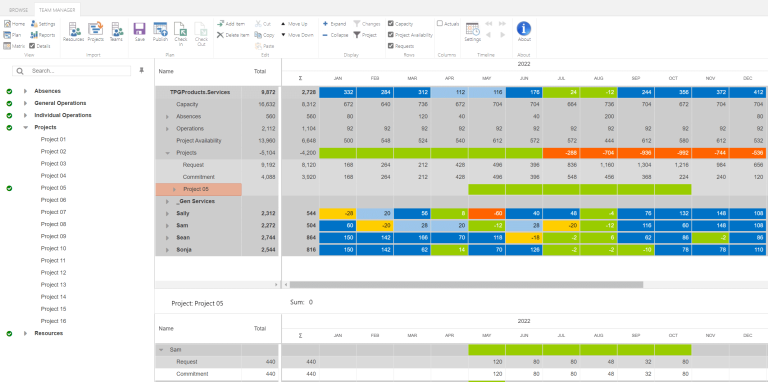
Your Benefits from Project Management Implementation via Resource Management
- You have a clear overview of resource utilization in the teams.
- You know each team member’s status and are able to identify overload and underload at an early stage.
- You know who is working when on what. And how much.
- You can identify the people quickly to whom you can delegate work.
- Project managers and team leaders have a perfect basis for coordination meetings.
- Team leaders are able to illustrate the workload of their teams for their superiors on a sound basis.
Special Download: Resource Planning Software for the Roles Involved (PDF file)
Please fill in the form.
* Required Fields | Data Protection
Possible Further Steps after Beginning via Resource Planning
- Extending system use to other departments that need to plan resources though they are not usually involved in project management
- Setting up cross-department or enterprise-wide reporting on resource deployment
- Linking the resource system to the project system if the further focus is on schedule management
- Linking the resource system to the portfolio system if the further focus is on portfolio management
- Connecting to actual time tracking
- Interfaces to the ERP systems for automatic synchronization of cost centers, types of deliverables, vacation
If you find the avenue to implementaion via resource management is not right for you either, the following approach focusing on project portfolio management probably will be.
Avenue 3: Project Management Implementation via Project Portfolio Management
If you want to implement your project management system via the project portfolio management approach, your first task is to determine which projects should actually be started. Only then do you address how to optimize the execution.
You might also like this article: 7 steps to optimal project portfolio management
This is the right path if you want to achieve one thing first of all. This would be to match the desired requirements from the corporate strategy with the actual opportunities to deliver results.
Essentials for Project Management Implementation via Project Portfolio Management
- Develop a process for project initiation.
- Define criteria establishing which undertaking is to be treated as a project.
- Define strategic drivers for prioritizing the projects in the portfolio.
- Create a complete overview of running projects to compare them and decide on the new projects.
- Check their feasibility by comparing the effort and cost planning with the available capacities and budgets.
- Complete and rough planning is better than incomplete and too detailed.
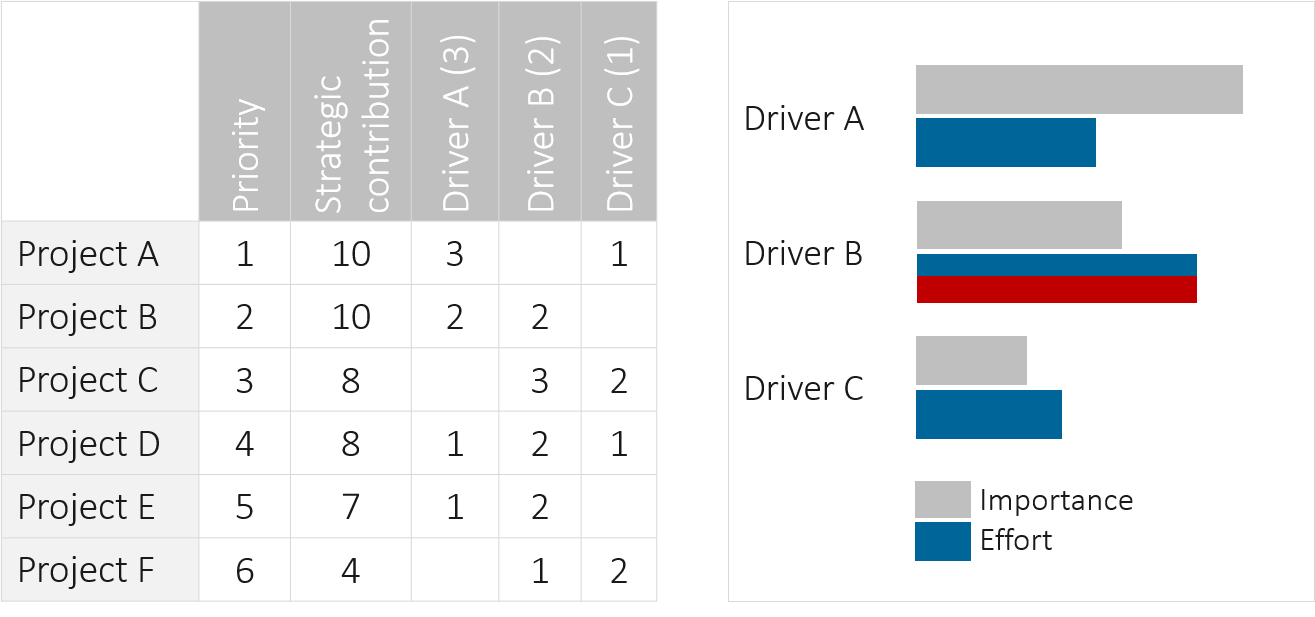
Your Benefits from Project Management Implementation via Project Portfolio Management
- You make sure you work on the right projects rather than implementing unimportant ones.
- A complete overview of all planned and running projects keeps you up to date on the portfolio.
- You know what further new projects you can start and actually carry out.
- You identify budget and resource bottlenecks in good time. This allows you to react to them according to corporate strategy.
Possible Further Steps after Beginning via Project Portfolio Management
- Extending scheduling
- Extending resource management
- Interfaces to the ERP systems for automatic synchronization of budget information
Before You Start Your Project Management Implementation
Regardless of the solution process you choose there are three things you should take into account. They will help ensure the success of your PPM solution.
- Begin in simple steps. You can expand your PPM system as required at a later stage. The steps you take should be straightforward. This will ensure acceptance and feasibility at all times. It will make your PPM implementation and introduction less likely to fail. Frequent reasons for failure are failed expectations, inadequate methods, and / or unused tools.
Our tip: Proceed in small steps in your project management implementation. You will still be able to expand the environment at a later stage – once it has been accepted by the users. Be true to the motto: “Better to start small than fail big!”
- Keep in mind the needs of all stakeholders who will have to work with the system later on. This is the only way to ensure acceptance. That way, your PPM system will support you even better in achieving corporate objectives.
- Ensure a shared understanding of the benefits of the project management environment. Do not expect too many benefits thanks to the new PPM system in too short a time. Good change management can help you along in the process of project management implementation and acceptance.
- Set up a strong PMO. In its position as a responsible central organizational unit, a Project Management Office will help you. It will see to a goal-driven introduction of this complex of challenging tasks, cyclical processes, and support tools. It will also ensure it is kept alive.
Conclusion – Project Management Implementation
This article has introduced you to 3 ways to begin project management implementation. At all events, you should begin with a central project list, minimal scheduling and simple project status reports to be regularly updated. Depending on your top priority, you can choose from the following approaches – Project management implementation via:
You have learned what is essential for each solution process and what benefit the respective approach will bring. Furthermore, you have found out how to go about expanding your enterprise-wise PPM solution for project, portfolio and resource management at a later stage.
No matter what avenue you choose for your company, make sure of three things:
- Begin with simple, straightforward steps.
- Take the needs of all stakeholders into account.
- Task a strong PMO with the realization.
Our final tips:
Get to know the individually adaptable “PPM Paradise” – the optimal environment for your enterprise-wide project, program, portfolio and resource management (PPM). Download the free eBook “The PPM Paradise” now (just click, no form).
And sign up for our bi-weekly blog newsletter with information on more hands-on articles, eBooks, etc. to improve your project management maturity level.
What has been your experience with project management implementation so far? Do let us know! We look forward to reading about your thoughts in the comment area below.
Johann Strasser
Managing partner at TPG The Project Group
The certified engineer, has been a managing partner at TPG The Project Group since 2001. After many years as a development engineer in the automotive and energy sectors, Johann Strasser spent a decade as an independent trainer and consultant in the field of project management. During his tenure, he also served as project manager for software projects in the construction industry and provided scheduling and cost management support for large-scale construction projects. At TPG, he applies his expertise in product development and consulting services for international clients. His special focus is on PMO, project portfolios, hybrid project management, and resource management. For many years now, he has shared his knowledge through presentations, seminars, articles, and webinars.
You can read more about Johann Strasser on LinkedIn and XING.
 Achim Schmidt-Sibeth
Achim Schmidt-Sibeth
Senior Marketing Manager
After earning his engineering degree in environmental technology, he gained many years of experience in project management through his work at an engineering office, an equipment manufacturer, and a multimedia agency. Achim Schmidt-Sibeth and his team have been responsible for content marketing and communication at TPG The Project Group for many years now.


